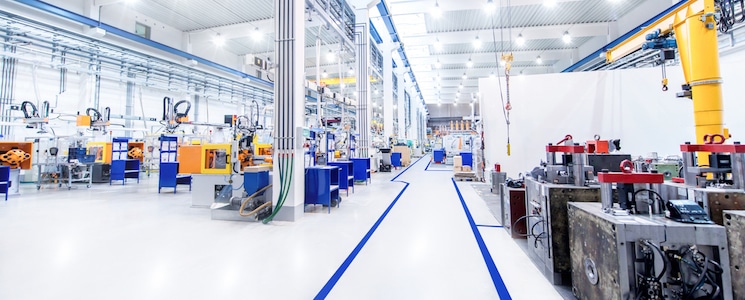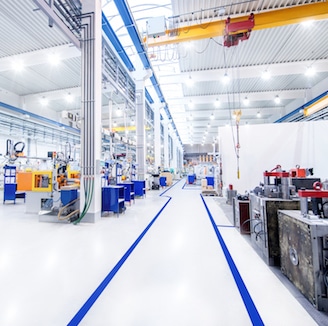
McKinsey recently put out a blog post and podcast on the future of manufacturing. McKinsey partners Katy George and Enno de Boer noted that some factories are moving forward successfully with the digital manufacturing vision. They are implementing automation, artificial intelligence, the Internet of Things (IoT) and digital technology to change the way they operate.
Existing facilities often begin the transition by finding ways to add sensors to existing machines and processes. They bring the signals from these sensors into central repositories for analysis. Machine learning helps them digest the data and find new insights.
Automated maintenance is a major beneficiary. Maintenance scheduling, ordering of spare parts and predictive maintenance have received a new lease of life from digitalization. In some areas, augmented reality (AR) headsets are being used to feed instructions to maintenance personnel.
On the operations side, digital performance management provides customized dashboards that are fed real-time data by sensors with drill down capabilities that allow a manager to isolate the source of issues or slows. Instead of days or weeks to resolve a problem, it can be dealt with effectively during the shift.
Digital manufacturing is only possible by the establishment of a digital thread. This thread pervades the enterprise, providing a way to keep track of the vast amount of changes that are the norm in complex discrete manufacturing. BOMs are updated in real time, as are change management systems, as-builts and related documents. This serves to eliminate human error and minimize dropped balls. It also curtails variability, deviation and loss of productivity. Dramatic improvements in speed of production are often experienced.
McKinsey gave the example of the complex wiring that is required in commercial airplanes. Instead of work instructions being compiled into a phonebook-like manuals, operators can view instructions online, via machine interfaces or even while wearing AR headgear. This takes the bulk of error potential out of the equation.
A common problem being faced in many enterprises, though, is being able to institute digital manufacturing at scale. Many companies are rolling out single IoT and digitalization use cases with limited scope. They are conducting various pilots to test the digitalization waters. What is missing, however, is a determined effort to create a digital thread to unite and transform the enterprise.
This might be due to many different reasons. Some may be afraid to move beyond the pilot stage, or balk at the investment required to expand the scope of digitalization. Others have perhaps grown too comfortable with traditional approaches. They can’t quite come to terms with the leap of faith required to launch the digital enterprise. Whatever the reason, their efforts never scale. By remaining small, results are relatively minor. It is easy for management to justify the decision to remain conservative.
These companies lack a forward-thinking vision and strategy to propel the company ahead. Investment in digitalization projects remains piecemeal. Meanwhile the competition strides ahead.
What is needed is a bold strategy to embrace digital manufacturing. Strategic investment can then be made in those areas likely to bring the most return. But this must be done sensibly – instead of bit and piece technology adoption, it is advisable to implement in areas that facilitate even broader adoption of digitalization. As McKinsey puts it, a top-down approach is likely to bring a higher rate of return and much faster gains than a bottom-up approach.
Aerospace is, by necessity, a conservative field. But those companies that have taken bold steps towards the institution of the digital thread are emerging as market leaders. The iBase-t Digital Manufacturing Suite provides a streamlined and sure way to scale ongoing digitalization initiatives. It lays the groundwork for an enterprise-wide digital thread. It brings together ERP, PLM and other manufacturing and management system into a unified whole.


